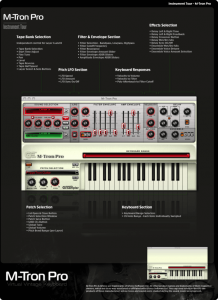
Firmly a concept album, the title track lasted over twenty-two minutes, leaving the boys from Düsseldorf ample space to make use of pads. In 1974, Kraftwerk produced an album called Autobahn. This use of electronic sound is a world away from what we now think of, but it did inadvertently sow a seed for future concepts, and it was with the advent of electronic organs and string machines, in the seventies, that the pad really started to gain traction. Image: Herve GLOAGUEN / Gamma Rapho via Getty Images Karlheinz Stockhausen’s seminal Hymnen mashed-up the world’s national anthems and set the precedent for the first use of electronic pads. Alongside this groundbreaking technique, Stockhausen used pure electronic tones to play out an often abstract harmonic progression, which sometimes appeared centre stage, but often melted into the background as a supporting texture, giving way for fragments of national anthem to return. His work called Hymnen (1967) made ground-breaking use of the national anthems of the world, which were recorded, processed and mutated in such a way that one anthem would literally morph into another, much like a DJ with decks, although the whole process was completed using magnetic tape. One of the earliest uses of electronic pads could be cited back to the contemporary works of experimental composer Karlheinz Stockhausen. Looking at the term’s description literally, the purpose of the pad is to pad-out the texture, whether it be in a musical sense, or for the sake of fleshing out a mix, when producing music in a studio or live setting. Despite these classical beginnings, it could be argued that the overall concept of the pad has largely been unchanged since this time, while the way we produce the sounds has altered substantially. Nobody really knows where the term ‘pad’ came from, or even when it first appeared, but it’s possible to chart its use back several hundred years, where composers such as JS Bach would have used string instruments to basically ‘pad-out’ textures, alongside a degree of harmonic movement.

For many, the term ‘synth pad’ conjures up thoughts of loud 80s bands with big hair, utilising equally large polysynths from the same era and using them to ramp up the cheese, but the actual concept of the pad was initiated long before then, it’s just that the pad’s increased association with synths placed it on a trajectory that catapulted the term firmly into the production lexicon.


 0 kommentar(er)
0 kommentar(er)
